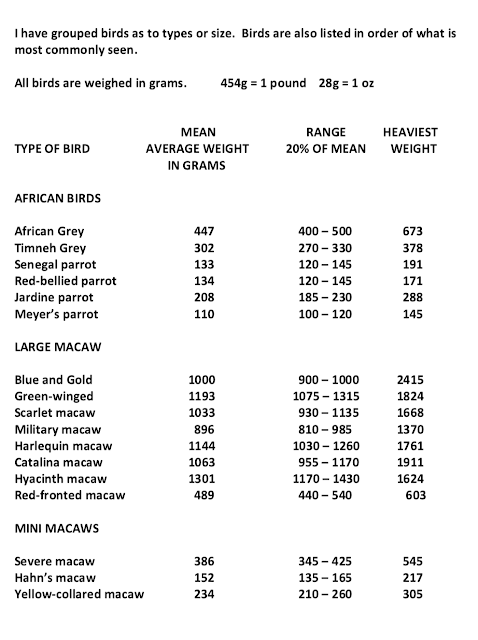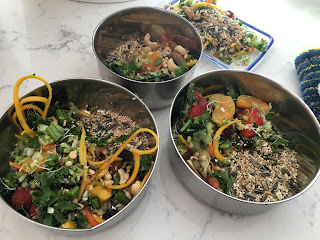a) Feed a high quality diet-
Giving your parrot a diet consisting of a balanced fresh raw diet made up of varied fruits, vegetables and sprouts (additional nuts, seeds, pellets ** based on personal choice) on a daily basis.
(*Please refer to below posts https://eclectusparrotlife.blogspot.com.au/2017/08/parrot-chop-for-this-week.html for ideas on parrot chop)
b) Keep the parrots living environment clean-
Daily bowl cleaning in hot water (if available) with washing up detergent is recommending for all bowls including water bowls. Making sure all food and other particles are removed. Utilising a dishwasher may be a preference for some parrot owners, but be careful of drying agents and always wash off any excess soap that may have accumulated during the process.
Daily cleaning of the base of the cage including the grate should be cleaned throughly with water, scrubber and detergent. The base materials (such as newspaper, printing paper or newspaper kitty litter) should be removed and replaced daily to reduce pathogen build up. Newspaper provides an easy to remove surface, and one paper can last several days if not a week for one parrot making it very affordable. Newspaper kitty litter may only need to be replaced twice to three times a week, but it can be very costly over time.
Perches should be free of faeces, mould and food build up. They may need to be cleaned a few times per week or just once depending on how much build up there is. Avoiding placing perches over each other where faeces will land onto the perch below can help reduce the amount of cleaning. Natural perches should be replaced every 3-6 months or their surface sanding back and cleaned (soapy water and sun dried). Natural perches are free, and utilising the old perches for sizing can make the process very quick and easy (especially after storms or heavy winds).
c) Regular checks with an avian veterinarian-
Minimum yearly are vital to good health. It may be difficult with aviary birds but it will be vital in long term health.
d) Regular exercise and weighing-
Weekly weighing is vital to note changes in weight including increases or decreases. Also regular exercise such as out of cage play, flying in a room (recall practice for example) are all ways to keep your parrot health. This post may give you some ideas about maintaining weight for good health-
http://eclectusparrotlife.blogspot.com/2017/09/ultimate-parrot-dieting-technique.html
d) Treatment for Lice, Mites and Intestinal Worms-
 Lice and mites are very rare in parrots, especially those housed indoors but they can become infected. It is best to have something such as vetafarm avian insect liquidator spray (https://petslovezone.com.au/bird/bird-medication/bird-parasite-control/vetafarm-avian-insect-liquidator-concentrate-100ml-detail) on hand in case it is required. As a general rule, once a year for outdoor birds (with no signs of mites e.g. damage to feathers or itchiness) or when introducing a new bird is a suitable number of treatments.
Lice and mites are very rare in parrots, especially those housed indoors but they can become infected. It is best to have something such as vetafarm avian insect liquidator spray (https://petslovezone.com.au/bird/bird-medication/bird-parasite-control/vetafarm-avian-insect-liquidator-concentrate-100ml-detail) on hand in case it is required. As a general rule, once a year for outdoor birds (with no signs of mites e.g. damage to feathers or itchiness) or when introducing a new bird is a suitable number of treatments. Parrots get parasitic worms just like most other species. They live in numerous places within the body not just the intestines. They can live in the crop, gizzard or even in the cloaca. They can in some cases be extremely deadly and a whole flock can perish, and in other cases birds can have a subclinical infection that doesn't have noticeable affected for their entire lives. A single parrot household where a parrot is not exposed to outside wild birds or potentially contaminated materials such as natural perches has an extremely low risk of parasitic worms. Also they cannot spontaneously form within the individual. Any use of browse or natural perches is a place for infection to occur. You will not be able to see worms in the faeces in most cases of infection, so it is best to always worm every three months despite lack of seeing any clinical symptoms.
Parrots get parasitic worms just like most other species. They live in numerous places within the body not just the intestines. They can live in the crop, gizzard or even in the cloaca. They can in some cases be extremely deadly and a whole flock can perish, and in other cases birds can have a subclinical infection that doesn't have noticeable affected for their entire lives. A single parrot household where a parrot is not exposed to outside wild birds or potentially contaminated materials such as natural perches has an extremely low risk of parasitic worms. Also they cannot spontaneously form within the individual. Any use of browse or natural perches is a place for infection to occur. You will not be able to see worms in the faeces in most cases of infection, so it is best to always worm every three months despite lack of seeing any clinical symptoms.List of Common Internal Parasites:
- Giardia Psittaci (Giardia)
Rare in larger parrots but can cause high mortality in budgies and cockatiels. Signs include weight loss and dairrhoea.
Treatment is with fenbendazole (such as that in vetafar
m wormout gel)
- Ascarids (Roundworms)
 Relatively common, causes gastrointestinal obstruction, bloody faeces, weight decrease or no clinical signs at all. Causes disease especially in younger birds <3 months old. Good plane of nutrition is good at stopping infection.
Relatively common, causes gastrointestinal obstruction, bloody faeces, weight decrease or no clinical signs at all. Causes disease especially in younger birds <3 months old. Good plane of nutrition is good at stopping infection.- Caecal worms (Capillaria spp.)
Thread like worms in intestine, caecum. Signs are weight loss, diarrhoea and blood in faeces
- Cestodes (tapeworms)
Transmitted by flies, beetles and ants. Very common in parrots but need access to infected flies, beetles and ants.
Treat the three above with ivermectin, levamisole, praziquantel, piperazine, oxfendazole or combinations of these. Vetafarm wormout gel is oxfendazole with praziquantel so it is suitable to treat these. ** Also you may wish to look for the active ingredients in other bird worming products. These are just a few of the main parasites, just to demonstrate how vital worming is for your parrot. 3 monthly treatment is recommended or regular faecal tested conducted by a veterinarian. Be careful and always follow instructions on dosage very careful*** Do not worm in water treatments on extremely hot days. Also avoid providing fruit and veg for a few hours as the birds may consume this instead of drinking the worming gel.

























